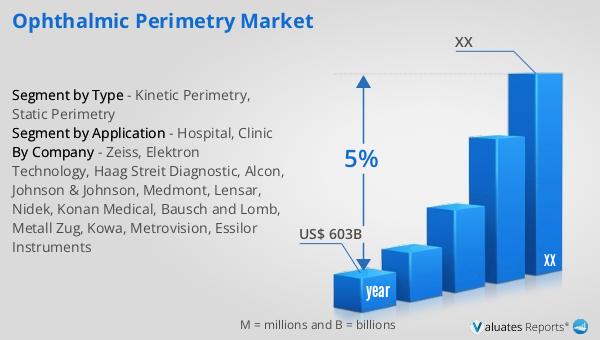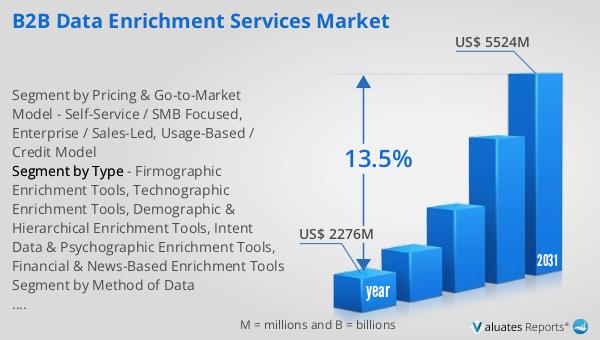What is Global Ophthalmic Perimetry Market?
The Global Ophthalmic Perimetry Market is a specialized segment within the broader medical device industry, focusing on tools and technologies used to measure the visual field of patients. Ophthalmic perimetry is crucial for diagnosing and monitoring various eye conditions, such as glaucoma, retinal diseases, and neurological disorders that affect vision. This market encompasses a range of devices, from simple manual tools to advanced automated systems, designed to map the visual field accurately. The data collected through these devices help ophthalmologists and optometrists to detect early signs of vision loss, plan appropriate treatments, and monitor the effectiveness of interventions over time. As the global population ages and the prevalence of eye-related conditions increases, the demand for ophthalmic perimetry devices is expected to grow, driving innovation and advancements in this field. The market is characterized by a mix of established players and emerging companies, all striving to offer more precise, user-friendly, and cost-effective solutions to meet the needs of healthcare providers and patients worldwide.

Kinetic Perimetry, Static Perimetry in the Global Ophthalmic Perimetry Market:
Kinetic perimetry and static perimetry are two primary methods used within the Global Ophthalmic Perimetry Market to assess the visual field. Kinetic perimetry involves moving a stimulus of fixed size and brightness from a non-seeing area to a seeing area until the patient detects it. This method is particularly useful for mapping the peripheral visual field and is often employed in cases where a detailed understanding of the outer edges of the visual field is necessary. It allows for the detection of scotomas (blind spots) and other irregularities in the peripheral vision, which can be indicative of conditions like glaucoma or retinal detachment. On the other hand, static perimetry involves presenting a stationary stimulus at various locations within the visual field, with the brightness of the stimulus being varied to determine the threshold at which the patient can detect it. This method is highly effective for detecting and quantifying central visual field defects and is commonly used in the diagnosis and management of glaucoma. Static perimetry provides a detailed map of the visual field, highlighting areas of reduced sensitivity that may not be apparent through kinetic perimetry. Both methods have their unique advantages and are often used complementarily to provide a comprehensive assessment of the visual field. The choice between kinetic and static perimetry depends on the specific clinical scenario and the information required by the healthcare provider. Advances in technology have led to the development of automated perimetry devices that can perform both kinetic and static tests, offering greater flexibility and precision in visual field assessment. These devices are equipped with sophisticated software that can analyze the data and generate detailed reports, aiding in the diagnosis and monitoring of various eye conditions. The integration of artificial intelligence and machine learning in these devices is further enhancing their accuracy and efficiency, making them indispensable tools in modern ophthalmic practice. As the Global Ophthalmic Perimetry Market continues to evolve, the focus remains on improving the accuracy, ease of use, and accessibility of these devices to ensure better patient outcomes.
Hospital, Clinic in the Global Ophthalmic Perimetry Market:
The usage of Global Ophthalmic Perimetry Market devices in hospitals and clinics is integral to the diagnosis and management of various eye conditions. In hospitals, these devices are often part of a comprehensive ophthalmology department, where they are used to conduct detailed visual field assessments for patients with complex or advanced eye diseases. Hospitals typically have access to the latest and most advanced perimetry devices, allowing for precise and thorough examinations. These devices are used not only for diagnosing conditions like glaucoma, macular degeneration, and diabetic retinopathy but also for monitoring the progression of these diseases and evaluating the effectiveness of treatments. In a hospital setting, perimetry tests are usually conducted by trained ophthalmic technicians or optometrists under the supervision of an ophthalmologist. The results of these tests are crucial for developing personalized treatment plans and making informed decisions about surgical interventions or other advanced therapies. In clinics, the use of ophthalmic perimetry devices is equally important, though the scale and scope may differ from that of hospitals. Clinics often serve as the first point of contact for patients experiencing vision problems, making early detection and diagnosis critical. Perimetry devices in clinics are used to screen for visual field defects, identify early signs of eye diseases, and refer patients to specialized care if needed. The convenience and accessibility of clinics make them an essential part of the healthcare system, providing timely and effective eye care to a broad population. Clinics may use a range of perimetry devices, from basic manual tools to more advanced automated systems, depending on their resources and patient needs. The integration of perimetry devices in both hospitals and clinics underscores their importance in maintaining eye health and preventing vision loss. As the demand for eye care services continues to grow, driven by an aging population and increasing prevalence of eye diseases, the role of ophthalmic perimetry devices in hospitals and clinics will become even more significant. These devices not only enhance the diagnostic capabilities of healthcare providers but also improve patient outcomes by enabling early detection and timely intervention. The ongoing advancements in perimetry technology, including the incorporation of artificial intelligence and machine learning, are set to further enhance the efficiency and accuracy of visual field assessments, making them indispensable tools in the fight against vision loss.
Global Ophthalmic Perimetry Market Outlook:
According to our research, the global market for medical devices is estimated at $603 billion in 2023 and is projected to grow at a compound annual growth rate (CAGR) of 5% over the next six years. This growth trajectory underscores the increasing demand for medical devices across various healthcare sectors, driven by factors such as technological advancements, rising healthcare expenditure, and an aging global population. The medical device market encompasses a wide range of products, including diagnostic equipment, surgical instruments, and monitoring devices, all of which play a crucial role in improving patient care and outcomes. The steady growth rate reflects the ongoing innovation and development within the industry, as companies strive to introduce more effective, efficient, and user-friendly devices to meet the evolving needs of healthcare providers and patients. As the market continues to expand, it presents significant opportunities for both established players and new entrants to capitalize on the growing demand for advanced medical technologies.
| Report Metric | Details |
| Report Name | Ophthalmic Perimetry Market |
| Accounted market size in year | US$ 603 billion |
| CAGR | 5% |
| Base Year | year |
| Segment by Type |
|
| Segment by Application |
|
| Consumption by Region |
|
| By Company | Zeiss, Elektron Technology, Haag Streit Diagnostic, Alcon, Johnson & Johnson, Medmont, Lensar, Nidek, Konan Medical, Bausch and Lomb, Metall Zug, Kowa, Metrovision, Essilor Instruments |
| Forecast units | USD million in value |
| Report coverage | Revenue and volume forecast, company share, competitive landscape, growth factors and trends |
